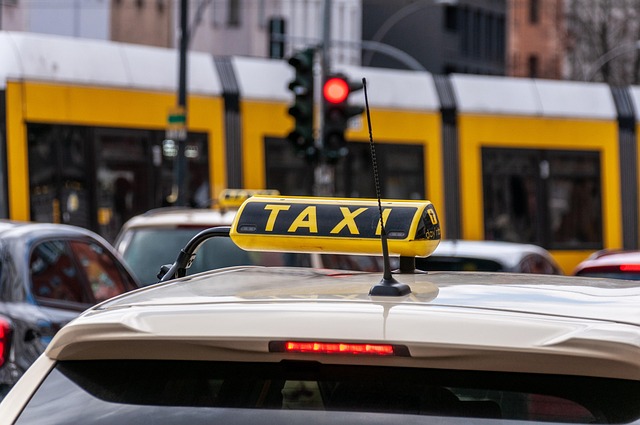Registering a car in California involves understanding specific requirements and gathering essential documents. This step-by-step guide walks you through the process, ensuring a smooth experience. First, comprehend the state’s car registration mandates. Next, collect necessary papers for your DMV visit. Learn why performing a DMV VIN verification is crucial before completing the application. After approval, obtain license plates and finalize registration online. Each phase, including effective dmv vin verification, simplifies car ownership in California.
- Understand California Car Registration Requirements
- Gather Necessary Documents for DMV Visit
- Perform VIN Verification: Steps and Importance
- Complete Application Process at the DMV Office
- Obtain License Plate and Register Your Vehicle Online
Understand California Car Registration Requirements

Before registering your car in California, it’s crucial to understand the state’s specific requirements. The California Department of Motor Vehicles (DMV) mandates several essential steps for new and transferred vehicle registrations. One critical aspect is the DMV VIN verification process, which ensures the authenticity of the vehicle’s Vehicle Identification Number (VIN). This step involves cross-referencing the VIN with the manufacturer’s records to confirm ownership and prevent fraud.
Additionally, you’ll need to ensure that your vehicle meets all safety and emissions standards set by the state. The DMV offers both online and in-person registration options, but for convenience, many Californians opt for mobile vin verification services, allowing them to complete the VIN inspection and registration from the comfort of their homes or workplaces.
Gather Necessary Documents for DMV Visit

Before visiting a California DMV (Department of Motor Vehicles) office, make sure you have all the required documents for a smooth registration process. This includes your vehicle’s registration from the previous state, a valid driver’s license, proof of insurance, and the most crucial document – the Vehicle Identification Number (VIN) verification. The VIN is unique to every car and can be found on the vehicle’s title or on the label inside the driver’s side door frame.
Additionally, consider having a mobile vin verifier or using a mobile vin inspection service if you’re in a hurry or facing any challenges with gathering documents. These services offer convenient solutions by providing VIN verification on-site or remotely, ensuring you meet all the necessary requirements for your California car registration.
Perform VIN Verification: Steps and Importance

Before registering your car in California, performing a Vehicle Identification Number (VIN) verification is a crucial step. This process involves checking the vehicle’s history and ensuring its authenticity to prevent fraud. The Department of Motor Vehicles (DMV) offers both online and in-person methods for VIN verification. For convenience, many individuals opt for a mobile vin inspection or vin inspection service, which allows a trained professional to conduct the check on your behalf.
To initiate the dmv vin verification, you’ll need to provide your vehicle’s unique 17-character VIN code. This information is typically found on the vehicle registration documents or etched into the car’s body near the driver’s side door or engine bay. Once validated, the DMV will access the National Motor Vehicle Title Information System (NMVTIS) to retrieve detailed records, including any reported accidents, title history, and outstanding loans. Ensuring a clean VIN verification is essential to streamline the registration process and avoid potential issues that may arise from a vehicle with an altered or compromised history.
Complete Application Process at the DMV Office

To complete the car registration process in California, you’ll need to visit a DMV office and gather all the necessary documents. The application process involves submitting an Application for Title and Registration (Form DMV-123) along with proof of identity, residency, and insurance coverage. During your visit, ensure you bring the vehicle’s title, which can be obtained through a mobile vin verification or by visiting the manufacturer if it was not provided by the dealer. Additionally, a current vin inspection report is required to prove that your car meets safety standards.
At the DMV, an agent will verify your documentation and perform a vin inspection to ensure the vehicle’s identification number (VIN) matches the details in their system. This step is crucial for maintaining accurate records. Once all requirements are met, you can proceed with payment for the registration fees.
Obtain License Plate and Register Your Vehicle Online

In California, registering your vehicle involves a straightforward process that begins with obtaining a license plate and completing the necessary paperwork online. The first step is to perform a DMV VIN verification, which ensures that your vehicle’s unique identification number (VIN) is valid and matches the specifications of the car you intend to register. This can be done conveniently through a mobile vin verifier, allowing you to complete this crucial step from the comfort of your home.
Once your VIN inspection is successful, proceed with registering your vehicle online at the California DMV’s official portal. Here, you’ll input your personal information, details about your car, and make the required payment for registration fees. This digital approach streamlines the process, saves time, and reduces potential errors associated with traditional methods, ensuring a smooth experience in getting your license plates.
Registering a car in California involves understanding state requirements, gathering essential documents, performing a DMV VIN verification, completing an application, and obtaining license plates. By following these steps and ensuring accurate documentation, you can seamlessly navigate the process. Remember, proper registration is crucial for road safety and legal compliance. So, take a dive into this guide to make the process as smooth as possible.
